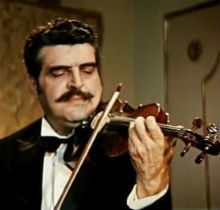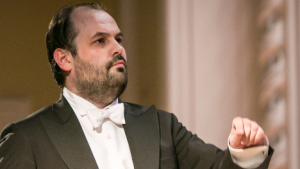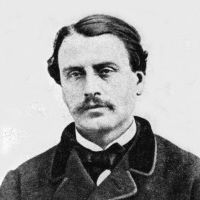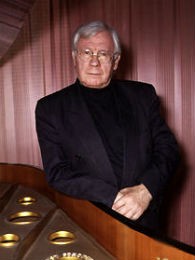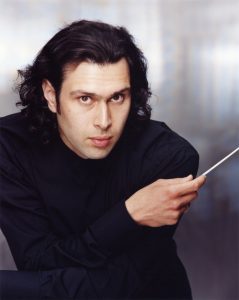We listen and understand the symphony
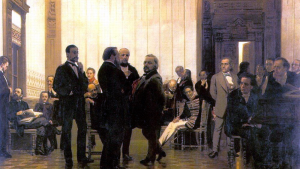 What is the difference between classical, academic, symphonic and philharmonic music? Can a string quartet be considered an orchestra, and can such a “orchestra” then be called a violin? Answers to these and other popular questions about symphonies – in the material portal “Kultura.RF”.
What is the difference between classical, academic, symphonic and philharmonic music? Can a string quartet be considered an orchestra, and can such a “orchestra” then be called a violin? Answers to these and other popular questions about symphonies – in the material portal “Kultura.RF”.
We go to the concert
A standard symphony concert consists of an overture and a concert for some instrument (most often for piano or violin) with an orchestra in the first part and the symphony itself – in the second. Most often they perform either overtures from well-known theatrical works, or having their own plot, which allows to perceive music even to completely unprepared listeners – on an extra-musical semantic level. Instrumental concerts composers write also based on the perception of the mass listener. With a symphony, everything seems much more complicated, but it is only at first glance.
The first symphonies in the form to which we are accustomed appeared in the time of Joseph Haydn and in many respects thanks to him. The word “symphony”, of course, existed long before the composer: it translated from Greek meant “joint [slender] sound” and served to denote a variety of musical forms and genres. But it was in the work of Haydn, the first of the Viennese classics – the symphony became what it is now.
Almost all symphonies are built according to the same scheme and, in fact, tell the same type of plot. This scheme is called the sonata-symphonic cycle, it consists of four independent musical parts. These individual pieces of music literally line up, like architectural structures, in accordance with very specific and precise mathematical laws. These laws were meant by the hero of Pushkin’s work, Salieri, when he said that he “believed in algebra harmony”.
What is the symphony
The first part of the symphony is sometimes called the “sonata allegro,” since it is written in sonata form and, as a rule, goes at a fast pace. The plot of the sonata form consists of three major sections – exposure, design and reprise.
The exposition successively contains two contrasting themes: the main part is usually more active, and the side part is often more lyrical. In the development of these themes are intertwined and interact with each other in any way at the discretion of the composer. A reprise summarizes this interaction: in it the main part sounds in its original form, and the side part changes under the influence of the main part. For example, if in the exposition it was lyrical, then in a reprise it becomes tragic (if the symphony is written in minor) or, on the contrary, heroic (for a major symphony).
The main intrigue of the symphony is how the composer develops the typical plot. And in an already familiar work, one can pay special attention to the interpretation of music by one or another conductor – this is akin to watching a new film adaptation of a famous novel.
The second part of the symphony is a slow, meditative character. It represents an understanding of the dramatic upheavals of the first part – as a rest after a storm or as necessary, but a slow recovery after a severe fever.
The third part brings the internal conflict of the symphony to resolution by means of external movement. That is why the composers of the XVIII century traditionally wrote it in the three-part rhythm of the then popular minuet dance. The form of the minuet was traditionally three-part, the third section of which literally repeated the first according to the “A – B – A” scheme. This repetition was sometimes not even written in notes, and after the second section they simply wrote “da capo”: this meant that the entire first section had to be played from the beginning.
Since the time of Ludwig van Beethoven, the minuet has sometimes been replaced with a quick and lively scherzo (“joke” in Italian), but in these cases the third part of the standard symphony often retained a three-part rhythm and the obligatory three-part form “da capo”.
And finally, the rapid fourth or final symphony emotionally and in meaning returns the listener to the “circulation of life.” This is facilitated by the musical form rondo (from the French rondeau – “circle”), in which the finals of classical symphonies are most often written. The rondo principle is based on periodic returns, as if in a circle, of the main theme (refrain), alternating with other musical fragments (episodes). The rondo form is one of the most harmonious and positive, and it is this that contributes to the life-affirming character of the symphony as a whole. .
No rules without exceptions.
The typical form described is typical of the overwhelming majority of symphonies created from the end of the 17th century to the present day. However, there are no rules without exceptions.
If something goes “not according to plan” in a symphony, it always reflects the composer’s special plan, and not his lack of professionalism or ignorance. For example, if the slow (“meaningful”) part of a symphony changes places with minuet or scherzo, as is often the case with nineteenth-century romantic composers.
